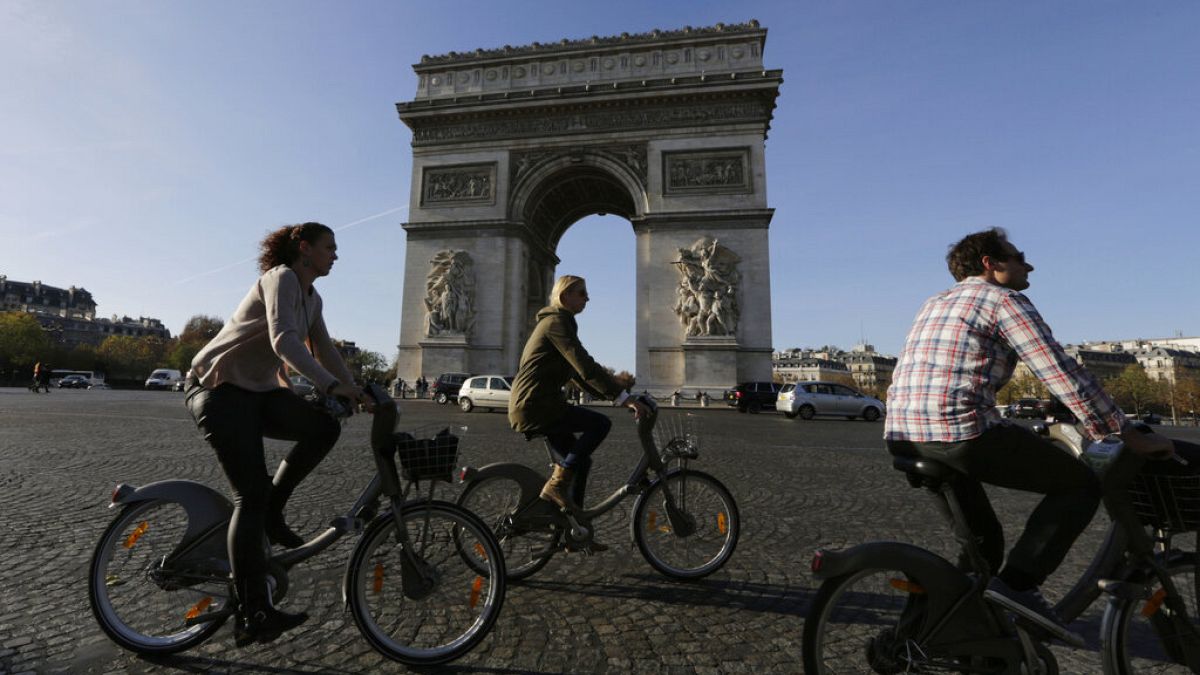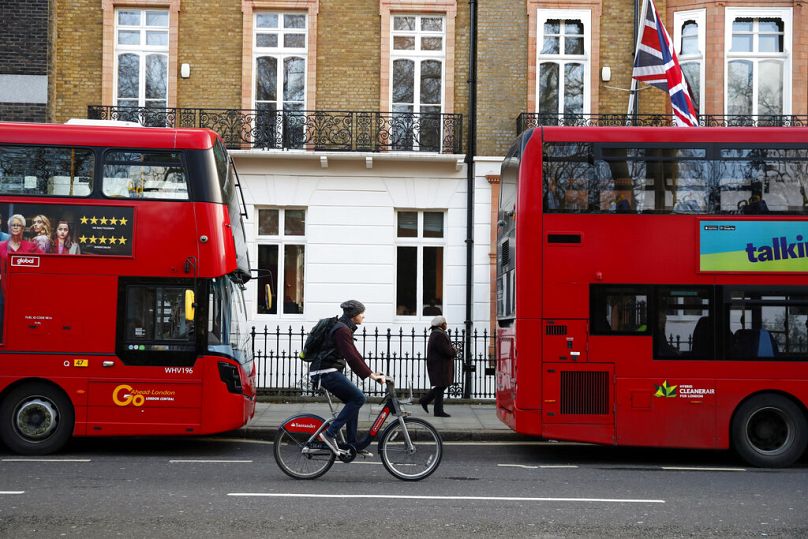Both cities have seen a recent increase in the number of cyclists on their streets, but each capital is dealing with future mobility in a different way.
In two major European capitals, different approaches to city transport are leading to alternate visions of future urban living .
Paris aims to become a 100% cycle-friendly city by implementing a car-free zone next year and has taken the decision to ban self-service electric scooters.
In contrast, London has extended its e-scooter trial until at least May next year, with two million journeys made to date.
“I don’t actually have an issue with e-scooters as long as they are regulated properly and don’t go too fast,” says James Metclaf from Volt Bikes.
While there are bold ambitions to expand protected cycle routes in London, an inability to make city wide changes means a lack of continuity on the roads.
“It’s ridiculous frankly – you can give people 15 miles (24.14 km) of segregated cycle provision and if there’s one dangerous mile they’re not going to risk it. People are frightened,” says local cyclist Rendel Harris.
Like London, Paris has seen a major increase in the number of cyclists. But unlike London, changes are being made at a municipal level.
Charlotte Florence was born in Paris and now lives and works in London. She regularly cycles on improved Paris partitioned cycle lanes.
“It's definitely easier and more accessible for everyone to cycle in Paris than it is in London. Most people in Paris will rent a bike if they're visiting but here (in London) if friends are visiting I wouldn't recommend it," she says.
Paris is investing €250 million into its centralised plan to enhance cycling infrastructure by 2026.
In London – a much larger city – the figure is triple that. But unlike Paris, it is placed into the hands of distinct boroughs.
In Kensington and Chelsea there is currently no provision for cyclists. A few weeks ago a young woman sadly lost her life.
In other parts of the city, cycling is catered for and campaigners say there needs to be more joined up thinking to prevent accidents from happening.
“Ultimately, you have 33 different approaches to cycling and it really ranges from the sublime, like Hackney, where every little kid is cycling to school and it's all lovely to places like Kensington and Chelsea where there’s massive resistance to cycling infrastructure," explains the central London coordinator of the London Cycling campaign, Claire Rogers.
As Paris and London navigate their unique paths towards urban mobility, one question remains: How can cities strike the right balance between sustainable innovation and safety?


